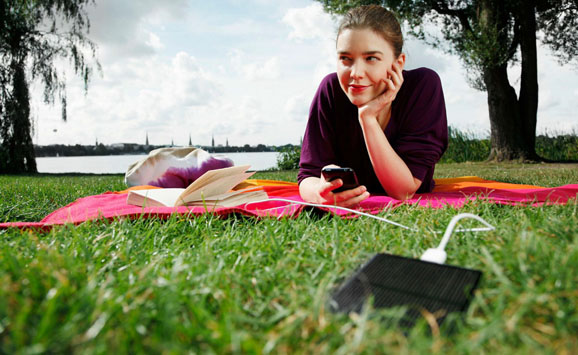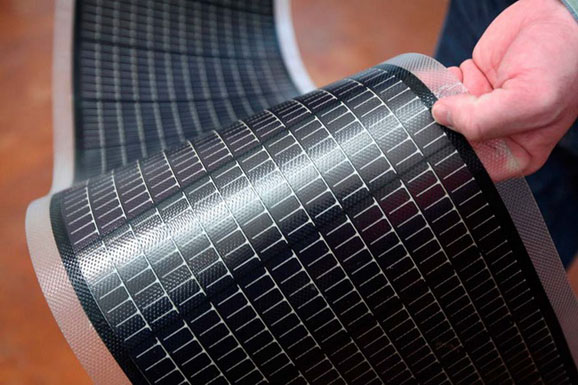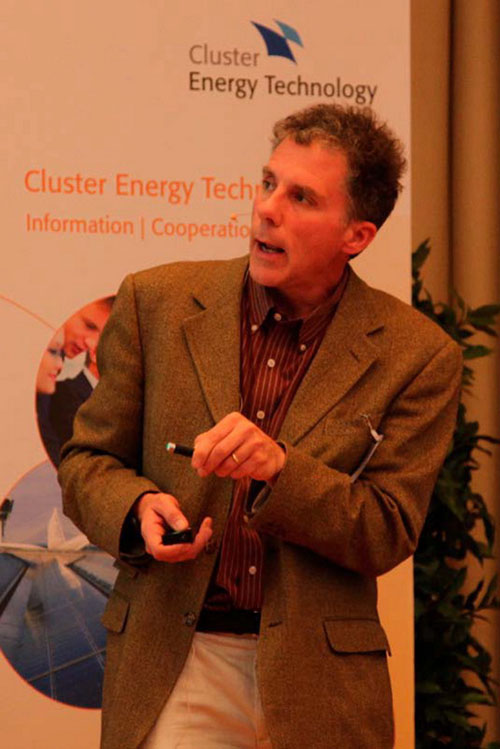The proposition that the solar energy industry remains unchanged is photovoltaic efficiency. Harry Atwater thinks his lab will overturn the existing solar industry. They are developing a new type of solar panel that is more than twice the photoelectric conversion efficiency of existing panels. The professor of materials science at Caltech thinks this is entirely possible. They study how to "manage light" at the nanoscale and design more elaborate architectures that can make a quantum leap in the efficiency of photovoltaic cells. MIT Technology Ventures magazine listed this technology as one of the "2013 10 Breakthrough Technologies." More effective "management of light" Solar energy generates electricity because the photons from the sun hit the semiconductor material in the battery. Photon energy knocks loose the electrons in the material, allowing electrons to flow freely. Traditional solar cells are typically 100 microns thick or thicker and consist of a single semiconductor material, usually silicon. The material can only absorb a certain part of the solar spectrum, and usually can only convert less than 20% of the energy into electricity. Most of the sun's energy is lost in the form of heat energy. Since 1961, scientists have known that, under ideal conditions, sunlight strikes a single pn crystalline solar cell and there is a limit to the amount of electricity that can be produced. This absolute limit is theoretically about 33.5%. This means that at most 33.5% of incident photon energy can be absorbed and converted into useful electrical energy. Currently, Sunpower's best single pn crystalline silicon cell efficiency is 24%, and Alta Devices, which Atwater is involved in, has the highest photoelectric conversion efficiency of 27.6% for GaAs solar cells. Stacking semiconductor materials can greatly increase conversion efficiency. The limit of the theoretical efficiency of the infinite pn crystal solar cell under spotlight is 86%. In reality, Solar Junction’s three-cell battery has a photoelectric conversion efficiency of 44% at 947 times the spotlight. But tandem means that in the production of batteries, a large amount of human, financial and physical resources are consumed in the stacking of components and in the production of buffer layers, which means that batteries cannot be made thin. In order to reduce costs and also because of its wider use, researchers have been seeking ways to make thinner solar cells. "Thin film batteries" can be perfectly integrated with buildings and are also easier to integrate into everyday items such as backpacks, tents, life jackets and even electronic products. However, thinner solar cells can only absorb less light, meaning that they cannot produce the same amount of power. Atwater and his colleagues thought of a solution. They resort to a peculiar optical effect known as optical resonance. Just as a radio antenna resonates and absorbs certain radio waves, a nano-optic antenna can also resonate and absorb light of a specific wavelength. They used this effect to design a thin nano-wedge structure, which has a strong light-absorbing ability and can absorb 70% of broad-spectrum light. It acts like a prism and splits the sunlight into 6-8 different wavelength sections, each with a different color, but each beam can be absorbed by a different semiconductor panel. They used this idea to design three structures. The above one has already been prototyped. Sunlight reflects through a metal plate and enters this special structure from a unique angle. It is made of a transparent insulating material. The coating on the surface of the material is a plurality of thin film solar cells composed of 6-8 different semiconductor materials. Once light enters the material, it encounters a series of very thin optical filters. Each filter only passes light of a specific color, is absorbed by a specific battery, and the rest is sequentially filtered and absorbed sequentially. The other two, despite their different designs, share the same basic idea: to combine traditional batteries and optical technologies to make more efficient use of the broader spectrum and reduce energy waste. Future photovoltaic cell incorporating optical elements Atwater said that it is unclear which design is the best. The solar cell they envisaged would have a conversion efficiency of at least 50%, and using optical components to gather light would reduce the use of semiconductor components and reduce cost. However, the production of such solar cells requires complicated and precise processes. He himself also believes that the increased processing costs can be compared with the automotive LED lamps. At the end of last year, his research group received US$2.4 million in research funding from the US Department of Energy's Advanced Energy Planning Agency (ARPA-E) to develop solar photovoltaic systems with ultra-high photovoltaic conversion efficiency (50%-70%). According to the analysis of MIT Technology Ventures, improving the photoelectric conversion efficiency through design is the best way to reduce costs. In the past few years, the price of solar panels has plummeted, and the price of panels has not made much sense to reduce the cost of the entire system. The costs associated with solar systems such as wiring, land, and permits are now the bulk of the cost. Increasing the efficiency of each solar cell means that the same electricity can be produced with fewer panels than before, and hardware and installation costs can be greatly reduced. The solar energy industry has now entered the integration period, creating opportunities for the replacement of new technologies. Silicon Valley enthusiasts are enthusiastic about their careers, electric vehicles, civilian spacecraft, and a wide variety of consumer electronics devices that give high hopes for solar technology. Experienced silicon-based batteries, thin-film batteries, a new generation of solar technology, the core is concentrated light. Now a commercially available concentrating technology battery, similar to Atwater's idea, uses a technology that tracks the sun and collects light, collects light by mirrors, mirrors, or transmission mirrors and collects them on a single photocell. Increase power generation. This can replace and reduce the use of more expensive semiconductor materials with less expensive optical condenser elements. At present, the most efficient is gallium arsenide photocell. Solar Junction, a Silicon Valley company that develops highly efficient multi-junction solar cells for the concentrating photovoltaic market, and IQE, the world's leading semiconductor wafer supplier, are negotiating with the European Space Agency to develop next-generation satellite solar cells based on this technology. The company “Alta Equipmentâ€, a company founded by Atwater, is also a Silicon Valley solar company and has been working hard to improve the photoelectric conversion efficiency of solar panels. Even if the above new technologies are commercialized, they have the highest energy efficiency and the thinnest in the world. The best flexible GaAs thin film solar cell technology. Because this solar film can be seamlessly integrated into any final electronic product, it is favored by drones, consumer electronics, automobiles, and telemetry. At present, the US military has adopted the Alta equipment company's solar cell, which is the lightest and most efficient in the world. The compact two A4 paper-size panels can generate 10 watts of electricity. Apple also envisioned the use of flexible solar thin-film batteries for mobile devices. Earlier this year, media reported that Apple has registered a patent for a solar multi-touch panel technology that inherits solar panels, multi-touch sensors, and light sensors that can convert solar energy into electricity and through the energy inside the mobile phone. The management unit stores the generated electric energy into the battery to provide longer life time for the mobile device. However, with the current photoelectric conversion efficiency, relying on solar energy for mobile phone charging efficiency is too low, a French company Wysips launched in early 2013, thin film charging products, light only 10 minutes to answer the phone for 2 minutes.
A leading Supplier & Manufacturer of Sliding Windows and Doors in China,offers high quality Thermal Break Door, Sliding Door ,Aluminum Sliding Door. please contact us.We are Supplier & Manufacturer of sliding Window Aluminium Profile in China, if you want to buy Doors and Windows Aluminium Profile,please contact us.
The Aluminum Profile is high quality and good price.
We can come true many kinds of surface treatment.
About the packing,there are paper,shrink film or can according to your needs.
Welcome you come to our company to visit.
Sliding Windows and Doors Thermal Break Door,Sliding Door,Aluminum Sliding Door,Sliding Windows Shandong Huajian Aluminium Group Co., Ltd , http://www.huajian-aluminium.com
Apple also envisions the use of flexible solar thin-film batteries for mobile devices, as long as the sun, you can charge the phone. 
"Thin film batteries" can be more easily integrated into everyday items. 
Harry Atwater, who introduced his new battery at a lecture.